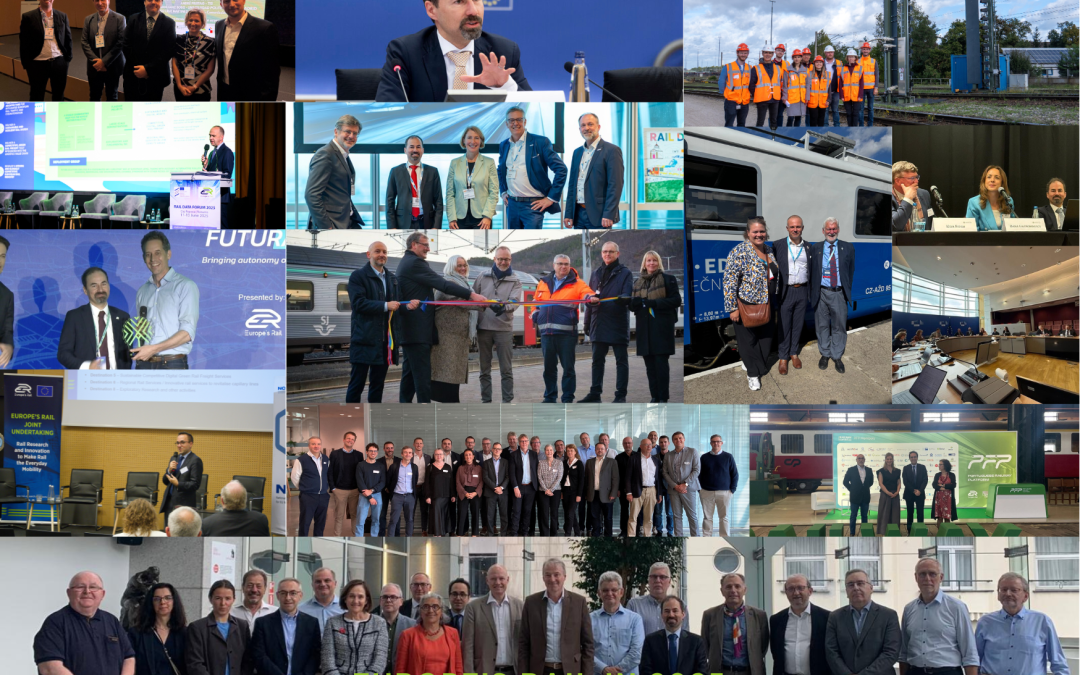2025 saw Europe’s Rail (EU-Rail) make significant progress across multiple initiatives, fostering partnerships and...

Description: FINE-2 energy workstream aims at a horizontal coordination of these activities and thus addresses the digital and sustainable transformation of European rail transport. By defining and evaluating a standardised methodology for the estimation and simulation-based measurement of energy consumption, European standards for energy assessment can be proposed and the efficiency improvements achieved through S2R innovations will be made visible. This deliverable presents a methodology for energy labelling of railway vehicles based on the results of a stakeholder survey. It starts by analysing the opinions of the rail stakeholders on three different energy labels. It then summarises the progress made by other modes of transport in developing comparable systems, before discussing the influence of constantly growing comfort levels in rail vehicles as a challenge for energy efficiency. In addition, various strategies for benchmarking of rolling stock energy consumption are analysed based on data collected, whereby the classification scheme and the graphical scale bar are examined in depth as appropriate comparison methods. Based on this, the rail vehicles energy labels are further developed, considering the standard for railway energy consumption quantification EN 50591, and measures for its clarification and simplification are proposed.
Target audience: Rail Infrastructure Stakeholders
How it brings us closer to achieving better rail for Europe: Although the railway is considered an energy-efficient means of transport, there has been a lack of efforts to demonstrate this efficiency with the help of energy labels. With the help of the developed methodologies, train vehicles can be compared with each other, which supports the development of even more energy-efficient trains. The evaluated survey also demonstrates a strong interest in energy labels for comparing among means of transport, which could further increase the use of rail transport. Both developments contribute in the long term to transparency, social awareness, the elimination of energy inefficient vehicles from the market and ultimately to the achievement of the EU’s climate and energy goals. Apart from this, the deliverable examines how the ever-increasing demands for passenger comfort and the resulting changes in demand affect the energy efficiency of vehicles and thus contributes to one of the still unresolved controversies surrounding energy efficiency.
More information on this topic: FINE2
Description: Although the Shift2Rail Innovation Programmes differ in their focus, they all aim at increasing the energy efficiency of the railway sector, which makes horizontal coordination indispensable. In this context, FINE-2 aims to develop and implement a methodology for evaluating the energy efficiency improvements achieved by the realised innovations. To be able to assess how the Technology Demonstrators (TDs) developed during the S2R projects contribute to this, reference values for the various speed profiles are required. This Energy Baseline has already been developed in FINE1 and was updated in this deliverable in the face of new technological developments and additionally required simulation input data. The Energy Baseline includes all the reference parameters that are necessary for calculating the energy consumption of trains for the different traffic segments and thus serves as the basis for calculating the energy savings achieved by the S2R innovations.
Target audience: Rail Infrastructure Stakeholders
How it brings us closer to achieving better rail for Europe: The deliverable updates the baseline to the level required and thus provides the foundation for many other projects whose coherence is ensured, and which will contribute to the future viability of the railway. At the same time, the deliverable increases cross-research awareness of the relevance of energy consumption. A standardised methodology for the estimation and quantified measurement of energy consumption will further reduce the environmental impact of railways, which will reduce their costs of vehicle operations and their overall life cycle. This, in turn, will increase their attractiveness and thus promote the modal shift in passenger and goods transport. It therefore offers great potential for the European railway industry as well as for the environment and society.
More information on this topic: FINE2